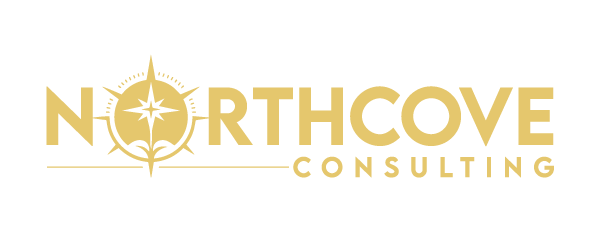
Internal Compensation Audit: Step-by-Step Guide with Audit Checklist for Internal Audit
An effective HR management has to perform an adequate compensation audit. Creating an audit checklist for internal audit makes the review process transparent and systematic along the way. If pay structures are aligned with your organizational objectives and workforce planning, compensation will not only attract but also retain and drive employees.
In an audit, you will examine pay ranges, pay equity, and market comparisons, which will help improve fairness and consistency. An audit checklist template can assist in helping you make sure nothing falls through the loopholes in the examination.
What is an Internal Compensation Audit?
An internal compensation audit is an internal review of your organization’s pay practices and policies. It makes sure that compensation is equitable across similar jobs and in line with company practices and the legal regulations. In the course of this audit, you will be doing a compensation analysis of the existing salaries, bonuses, and benefits.
In this review, internal comparisons of roles are done to verify pay equity and against market rates to ensure competitiveness. One of them is market data benchmarking, where you gather external salary survey information that you can compare to your pay ranges, ensuring your company remains competitive. An effective audit also checks if compensation decisions are both policy and strategy-driven.
Why Conduct a Compensation Audit?
A pay audit facilitates openness and retention. Workers trust firms that conduct regular pay equity reviews. On the ground, companies that conduct audits often experience better morale and can prevent costly legal disputes over pay bias.
Experience demonstrates that minor changes discovered with an HR audit checklist aimed at compensation can really enhance staff satisfaction. Organizations usually find problems such as the use of outdated salary ranges, overlooked pay compression, and inconsistent job categories. In most cases, stale job descriptions or a foggy job architecture and design make it difficult to ensure equity among the workforce. Auditing these areas fine-tunes your frameworks and maintains consistency.
Step 1: Define Scope and Objectives
- Make the objective of the audit clear: Is it focused on pay equity, market competitiveness, or compliance?
- Choose the departments or roles to examine: It is always a good idea to begin with the areas of concern (such as high turnover or high-cost jobs) to achieve immediate results.
- Involve stakeholders in advance: It is important to involve human resources, finance, legal, and departmental heads in order to know the objectives and be in a position to assist in data collection.
Step 2: Gather Data and Documentation
- Collect payroll information for each worker, including starting pay, bonuses, incentives, and benefits.
- Pull job descriptions, performance reviews, and history of promotions to explain any pay discrepancies.
- Keep records current. Check policies (e.g., employee handbook and policy development documentation) to ensure that rules are properly applied.
- Utilize accurate tools or spreadsheets to structure data consistently; consistent records are important to facilitate analysis.
- Verify that the historical information regarding salary changes and market shifts is accessible to understand long-term trends.
Step 3: Perform Internal Analysis
- Verify internal pay equity by ensuring that workers with equivalent jobs, experience, and performance are paid equally.
- Make adjustments for valid differences, such as tenure or specialized expertise. For instance, balance increased pay for extended service or higher qualifications.
- Flag pay compression and anomalies. Most firms find legacy differences, e.g., workers who were given raises that did not fit the usual schedule or neglected jobs.
- Record any outliers: Both underpaid and overpaid positions should be flagged for further consideration.
Step 4: Benchmark Externally
- Initiate compensation benchmarking by gathering current market salary information from surveys or industry studies.
- Benchmark your salary ranges against this outside information to make sure your pay is still competitive. Modify salary bands if you determine that your rates are substantially lower than the market.
- Example: A recent project had a client realize its engineers were earning 15% less than the market median, prompting immediate changes. This cut employee turnover by 10% in the next year.
- Report any outside changes required; incorporate these findings into future salary budgeting and strategic planning.
Step 5: Checklist Review
- Create a comprehensive audit checklist for internal audit covering all primary areas of compensation.
- Include items such as pay equity reviews, salary range alignment checks, and policy compliance checks.
- Ensure each item on the checklist is brief and actionable (such as “Are salary grades documented?” or “Have all pay decisions been reviewed?”).
- Use the audit template checklist throughout the audit to maintain consistency and completeness.
- After completing the audit, improve your audit checklist for internal audit with any new findings or regulatory changes to improve future cycles.
Key Areas and Questions for the Compensation Audit
Audit Area | Key Questions / Audit Checklist For Internal Audit Items |
Compensation Philosophy & Policy | Are compensation policies documented and aligned with strategy? – Are salary grades clearly defined and published? |
Pay Structures & Salary Ranges | Are current salaries within approved ranges? – Are pay adjustments reviewed regularly for fairness? |
Internal Equity & Pay Parity | Are employees in similar positions paid similarly? – Are any pay differences justified (by tenure or skills)? |
External Benchmarking | Do salaries align with external market data from salary surveys? |
Legal & Compliance | Are pay practices compliant with labor laws and regulations? – Is compensation documentation complete and up-to-date? |
With the following audit checklist for internal audit, you should be able to cover every important area. It could be useful to create a table or a form to keep track of all questions being answered.
Reporting Findings and Taking Action
Once the analysis is complete, prepare a clear report. Point out any discrepancies and risks (including pay disparities or policy breaches) and give priority to recommendations. For example:
- Summarize key findings (e.g., jobs below market rate, stale pay bands).
- Suggest specific actions (pay changes, policy revisions, or manager training).
- Refresh documentation and notify leadership and impacted teams.
- Include findings within compensation planning and future talent strategy to ensure alignment.
Best Practices
Make sure that this audit is in line with your overall HR strategy and risk management. Adjust the audit process to the culture and requirements of your company and seek the assistance of experienced HR specialists or consultants in case of need. Refine your audit checklist for internal audit by learning from each cycle.
The Bottom Line!
A comprehensive compensation audit is an investment in fairness, transparency, and trust among employees. With a detailed checklist and these steps, it is possible to detect inequities, maintain compliance, and maximize your pay strategy. Align this audit with your organization’s internal audit process steps (planning, execution, reporting, and follow-up) of your organisation.
Update your audit checklist for internal audit; this will increase the chances of success in your next review. Want to improve your compensation practices? When starting your compensation audit, you should consider consulting an HR expert like Northcove Consulting or reading special resources.
For personalized advice on improving your compensation audit process, start discussions with a trusted advisor today at [email protected] or (877) 595-3087 to make sure your strategy moves forward with changing standards.
Frequently Ask Questions
What is an internal compensation audit?
It is an in-depth assessment of a company’s compensation practices to guarantee fairness, legality, and strategy fit.
Why should my organization conduct a compensation audit?
Frequent audits increase the level of trust among employees, ensure compliance, and retain talent by maintaining fair and competitive pay.
What should be included in an audit checklist for internal audit?
The checklist must include all the elements of compensation: salary ranges, pay equity, policies, and documentation, ensuring each item is reviewed and questions are clear.
How often should we perform a compensation audit?
Most organizations undertake compensation audits on a yearly or bi-yearly basis or following significant changes (such as mergers or revisions of the compensation plans).
How to conduct internal audit for compensation?
Use a step-by-step procedure: define scope, collect data, analyze pay (according to your audit checklist for internal audit), benchmark externally, and report findings. This guideline shows how to undertake an internal audit effectively.
Related Posts
The Top 7 Benefits of Effective Workforce Planning Every HR Leader Should Know
The Top 7 Benefits of Effective Workforce Planning Every HR Leader Should Know Most conversations…
Identifying and Closing Skill Gaps in the Workplace with Workforce Data
Identifying and Closing Skill Gaps in the Workplace with Workforce Data Every thriving workplace has…
Internal Compensation Audit: Step-by-Step Guide with Audit Checklist for Internal Audit
Internal Compensation Audit: Step-by-Step Guide with Audit Checklist for Internal Audit An effective HR management…
How to Conduct a Pay Equity Audit and Why It Matters
How to Conduct a Pay Equity Audit and Why It Matters A pay equity audit…






